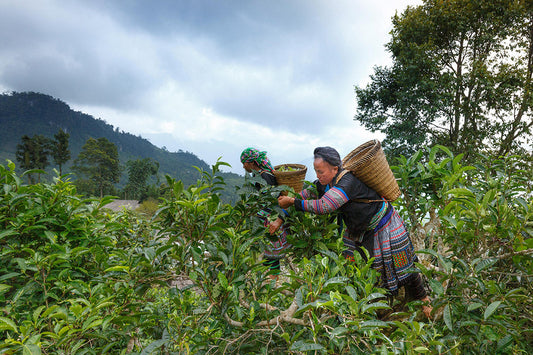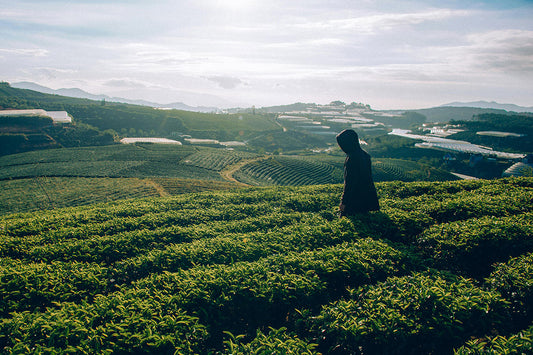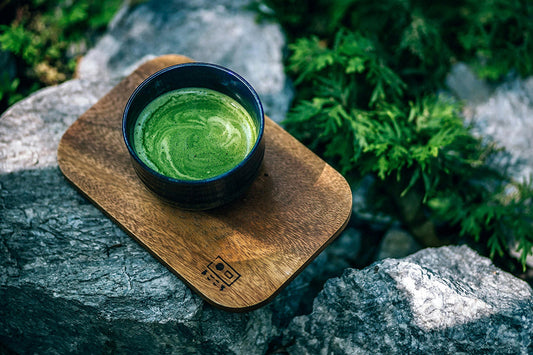Tea is more than just a drink—it’s a cultural cornerstone, a ritual, a remedy, and for many, a daily necessity. But where did this globally cherished beverage actually come from? From ancient myths to imperial courts and global trade routes, the story of tea spans continents and centuries. In this article, we’ll explore the fascinating origin of tea, its early uses, and how it evolved into the diverse world of tea we know today.
The Mythical Beginnings of Tea
The origin of tea is steeped in legend. According to Chinese mythology, tea was discovered by Emperor Shen Nong in 2737 BCE. As the story goes, he was boiling water beneath a tree when a few leaves drifted into his pot. Intrigued by the pleasant aroma and invigorating effect, he began experimenting with the leaves—thus discovering tea.
Whether fact or fable, this myth highlights tea’s ancient roots and its early reputation as a medicinal plant. Ancient Chinese texts often describe tea as a detoxifier and a health tonic.
Historical Evidence: China and the Tang Dynasty
The earliest credible records of tea consumption date back to the Shang Dynasty (circa 16th–11th century BCE), when tea leaves were used for medicinal purposes. However, tea as a beverage truly flourished during the Tang Dynasty (618–907 CE).
It was during this period that Lu Yu, often called the "Sage of Tea," wrote The Classic of Tea (Cha Jing), the world’s first book entirely dedicated to tea. Lu Yu described methods for cultivating, brewing, and appreciating tea, elevating it from a mere drink to a refined cultural practice. By the Tang era, tea drinking had become a part of daily life among the aristocracy, monks, and intellectuals in China.
How Tea Spread Across Asia
From China, tea gradually spread across Asia—carried along trade routes, by Buddhist monks, and through imperial diplomacy.
In Korea, tea was introduced around the 6th century by monks. Korean tea culture was closely tied to Zen (Seon) practice and emphasized simplicity and meditation.
Japan’s tea history began with the monk Eisai, who brought tea seeds from China in the late 12th century. Tea became deeply integrated into Japanese culture, especially among Zen Buddhist communities. Over time, tea evolved into a refined ritual, deeply embedded in Japanese society.
The Introduction of Tea to Europe
Tea first reached Europe in the early 17th century via Portuguese and Dutch merchants. By 1610, the Dutch East India Company was importing tea into Holland. At first, tea was a luxury product, enjoyed mainly by the elite.
Tea’s popularity skyrocketed in England after the Portuguese princess Catherine of Braganza married King Charles II in 1662. Her love of tea helped popularize the beverage among the English court, and it wasn’t long before tea became a fashionable—and eventually essential—part of British life.
Tea and Colonialism
As tea demand soared in Europe, so did its geopolitical importance.
The British East India Company dominated tea imports from China. To offset the massive silver trade deficit created by tea purchases, the British began exporting opium to China—leading to the devastating Opium Wars. These conflicts resulted in increased Western control over Chinese trade.
Meanwhile, to reduce reliance on Chinese tea, the British began cultivating tea in India. They discovered that the Assam and Darjeeling regions were ideal for tea production. By the 19th century, India had become a major tea producer, supplying vast amounts to the British Empire.
The Rise of Tea Culture in Japan
While British and Chinese tea industries expanded commercially, Japan developed a uniquely spiritual and aesthetic approach to tea. The Japanese tea ceremony, or Chanoyu, is a highly ritualized practice emphasizing harmony, respect, purity, and tranquility.
Popularized by tea master Sen no Rikyū in the 16th century, the ceremony uses matcha (powdered green tea) and deliberate, choreographed gestures. For the Japanese, tea was more than a beverage—it was a path to mindfulness and inner peace.
The Global Tea Trade and Industrialization
By the late 19th and early 20th centuries, tea had become a global commodity. Innovations in packaging, such as the invention of the tea bag, made it easier and faster to brew tea—bringing it into homes around the world.
Sri Lanka (then Ceylon) rose to prominence as a tea-producing region after a coffee blight decimated the island’s previous industry. Ceylon tea gained a reputation for its strong, brisk flavor and remains highly regarded today.
In Africa, countries like Kenya and Malawi emerged as key tea producers in the 20th century. Meanwhile, in the United States, iced tea became a national favorite—especially after gaining attention at the 1904 World’s Fair in St. Louis.
Modern Tea Culture: A Global Phenomenon
Today, tea is the second most consumed beverage on Earth after water. Its forms are as diverse as the people who drink it—green tea, black tea, oolong, white, herbal infusions, and even fermented teas like pu-erh.
Around the world, tea plays many roles:
-
In Britain, it’s a cultural staple often served with milk and biscuits.
-
In Morocco, mint tea is a sign of hospitality.
-
In India, chai is a spiced milk tea sold on every street corner.
-
In Taiwan, bubble tea has become a worldwide trend.
-
In China, traditional gongfu cha brewing methods are enjoying a revival among younger generations.
At Tis for Tea, we embrace this rich and diverse heritage. Whether you're looking for a calming green tea, a bold black blend, or a modern twist like matcha latte powder, our curated collection brings the world's tea traditions into your home.
Conclusion: Tea’s Enduring Legacy
The origin of tea is a story of discovery, tradition, trade, and transformation. From ancient emperors and Buddhist monks to modern tea masters and everyday drinkers, tea continues to inspire and connect people across the globe.
Understanding where tea comes from allows us to appreciate the complex history behind each cup. It reminds us that tea is not just a product, but a story—a cultural expression shaped over thousands of years.
At T is for Tea, we’re proud to be part of that story. Every cup we offer is rooted in this rich legacy and brewed with care for the future of tea lovers everywhere.






